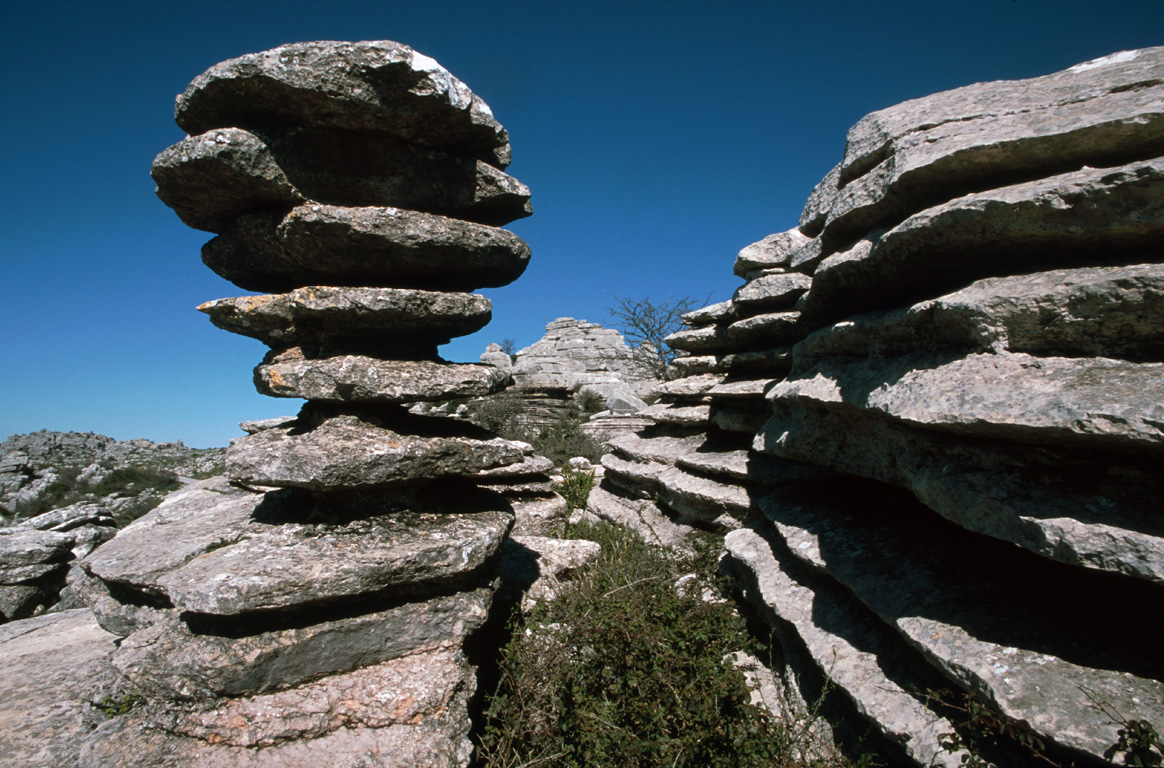 12.35.42.png)
To the south of Antequera is Torcal, a limestone mountain range where erosion has sculpted a formidable labyrinth of rocks with fantastic shapes such as the Tornillo, which looks just like an immense screw-threaded halfway into the planet. It was in the Jurassic Age, 150 million years ago, that these surprising rocks formed on the sea bed, as a result of the deposit and compacting of corals, mollusc shells and other shellfish of the era. Subsequently, time and geology worked together patiently, designing this landscape of narrow corridors. Its intersections opened to craters, basins and 'torcas' (clay-bottomed depressions), which give the place its name, and the boulders were shaped leading to tapering channels and the unique shapes of the Torcal which, rather than screws, look like hamburgers with many layers.

The repertoire of picturesque formations is completed with caves and chasms typical of a limestone enclave, with wild rose bushes, ivy, honeysuckle and 30 varieties of orchids. That is what the most beautiful and peculiar natural part of Andalusia is like.

The park centre recommends that visitors begin with the green route, a 1.5 km well-signposted pathway that covers the highest and most impressive area of the Torcal in under an hour. If you have the opportunity you must pay it a visit.
One of the most remarkable values of the El Torcal extensive fauna is the wide range of the birds that it supports, either in a sedentary way or simply as a transitive station in the migratory routes or as a nesting point. Thanks to this, the Natural Park was declared as a Special Zone for the Protection of Birds (ZEPA in Spanish).
But some of these bird species have become really rare due to man's irresponsible behaviour (poisons, the pillage of nests, uncontrolled sports activities, etc.), such victims have been the golden eagle, the peregrine falcon or the Bonelli’s eagle. The griffon vultures are also visible in the park and are usually over El Torcal, either passing between the Desfiladero de Los Gaitanes-Sierra Huma and the Sierras de Camarolos and el Jobo or when they come to eat cattle carcasses (authorized in some areas of the Paraje).
The reptiles present in the Natural Park depend to a large extent on the weather, so they are fully active in spring and summer, at which time they can be seen frequently. The most dominant species are; ocellated lizard, colilarga (long-tailed lizard) and Iberian lizard, stair snake, bastard snake and the snout viper, which does have a venomous bite.
El Torcal is a wonderful place to visit and if you enjoy nature it is really is a must!